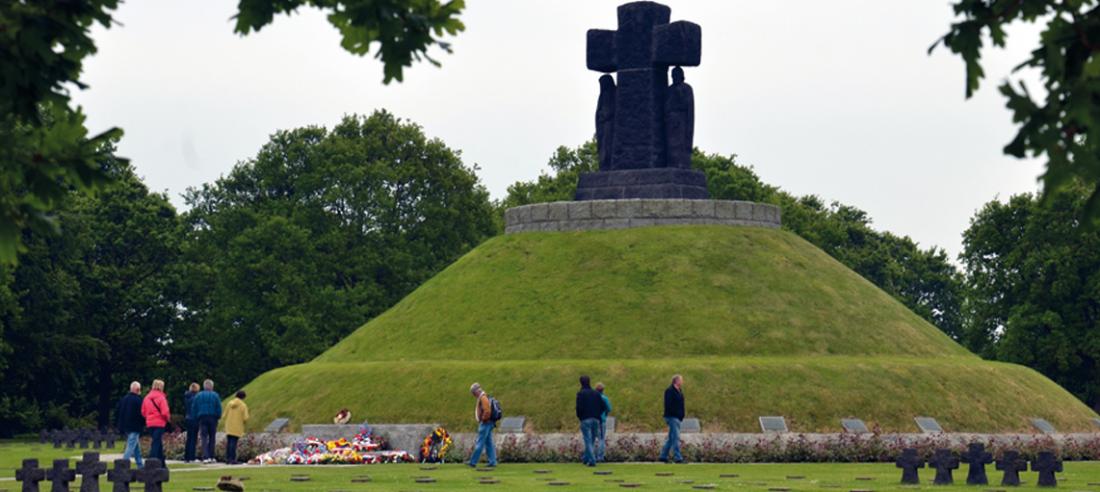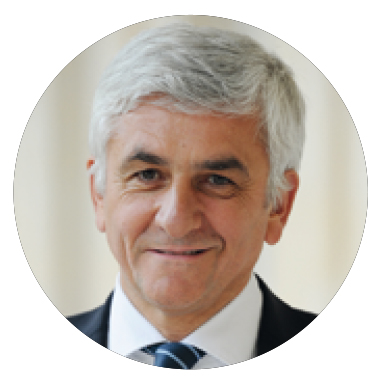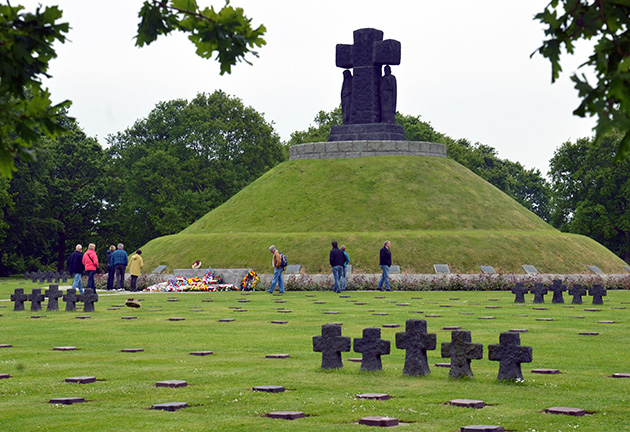German remembrance tourism in Normandy
Sous-titre
Interview with Hervé Morin, chief executive of the Normandy Region

Normandy’s number-four tourist nationality, the Germans come mainly to enjoy the beaches, countryside, heritage and gastronomy. Although history – in particular, Second World War history – is also one of their motivations, the number of German visitors to the region’s remembrance sites is estimated to be only 300 000. Getting them to go there remains a challenge for the regional authority.

Hervé Morin, chief executive of the Normandy Region
Can we talk about a shared Franco-German memory in Normandy? Which remembrance sites in particular are concerned with that shared memory?
Hervé Morin (HM) : Sharing the memory of events that took place in Normandy in the Second World War is not easy when you consider the very different experiences of France and Germany. Which is why, for many years now, we have undertaken in-depth work with remembrance organisations to draw up a blueprint for that shared memory. Franco-German reconciliation around the memory of the Second World War began symbolically on the 60th anniversary of the D-Day landings and the Battle of Normandy, on 6 June 2004, at the first Franco-German ceremony presided over by French president Jacques Chirac and German chancellor Gerhard Schröder, at the Caen Memorial. For the first time since the war, the French and German flags flew together. Since then, Germany has been invited every year to the D-Day landings ceremony.
Through our 90 remembrance sites, our desire has always been to tell the story of the landings and the Battle of Normandy in its entirety. The La Cambe German Military Cemetery plays a crucial role in this. Run by the Volksbund Deutsche Kriegsgräberfürsorge (the German war graves commission), it was opened in 1961 and contains the graves of 21 222 German soldiers. Every year, it receives nearly 450 000 visitors, including many school parties. Outside the cemetery is a visitors’ centre devoted to German remembrance and reconciliation. The site is often presented as a mirror of the Normandy American Cemetery at Colleville-sur-Mer, a few miles away. The remains of the Atlantic Wall, the batteries at Azeville, Crisbecq and Longues-sur-Mer, or the V1 rocket launch sites in Seine-Maritime, are also important places in the construction of this shared memory. These structures bring alive the everyday life of soldiers and civilians before and during the D-Day landings, and today they form an integral part of the tourism offering, alongside the Allied remembrance sites. Together, all these sites contribute to the construction of a universal memory.

The German military cemetery at La Cambe (Calvados), 10 June 2013. © David Major
Do you work in partnership with Germany to promote these sites?
HM: The Normandy Region is a founding member of the Liberation Route Europe (LRE) network, whose transnational itinerary aims to tell the story of the liberation of continental Europe and the long-term consequences of the Second World War. Based on each country’s individual stories, it seeks to give an international response by analysing the complex legacy of the conflict from different perspectives.
Sites and institutions in ten countries, including Germany, pool their expertise to develop a Europe-wide remembrance tourism linked to the Second World War. This initiative feeds into our own work and has, in particular, enabled us to improve the historical contextualisation at visitor sites which sometimes overlooked German history. We also worked with the Allied Museum in Berlin on a touring exhibition aimed at young people, which presented first-hand accounts of civilians and soldiers from around the world.
What actions does the Normandy Region carry out to promote its remembrance heritage with the German public?
HM: Germany is one of Normandy’s priority markets. Remembrance tourism is showcased for the Germans at expos, talks, press conferences, etc. Our destination website (www.normandie-dday.com) is translated into German. We have also formed a publishing partnership with a German brochure equivalent to the Michelin Green Guide. Normandy must reach out to everyone and tell this shared history always with a focus on promoting the values of peace and reconciliation.
Can you tell us about any significant actions that have been carried out in recent years to improve German tourist welcome at remembrance sites
HM: The “Remembrance Tourism in Normandy” destination agreement signed in 2014, for which the Normandy Region is the lead, included a specific action plan on improving the welcome for German visitors. Remembrance tourism is not the main reason the Germans visit Normandy. For instance, they account for only 1% of visitors to the Caen Memorial, which receives over 350 000 visitors per year. The Germans still seem to feel uncomfortable about visiting remembrance sites, a feeling doubtless heightened by what are often caricatured representations of German soldiers in the museums. Added to that is the absence of guided tours in German at most sites.
We therefore need to deepen our knowledge of this clientele in order to draw them to this theme, by improving the visitor offering and ensuring a balance in historical narratives. To that end, Normandy’s regional tourist board collected specific data from the German public to find out their reasons for visiting/not visiting the region’s remembrance sites. The survey concluded that the Germans have an interest in the subject matter and would like to learn about this history and pass it on, especially to their children. However, many were put off by the fact that the sites often had a narrative geared to the liberators and lacked German translations. Improving the historical narrative and the visitor interface (German translations, use of digital technology, etc.) are key targets.
What strategy will you use to attract German young people to the remembrance sites, in particular school groups?
HM: The passing-on of memory to young people is an overarching goal for the whole sector, and we focus on it for all nationalities of visitors. For instance, we develop specific visitor offerings for young people and organise talks by survivors for young people. Our regional strategy, “Normandy for Peace”, also supports many projects geared to mobilising young people for peace.
Improving the offerings available for school groups at museums and promoting the destination with specialist tour operators are crucial. We also took part in a seminar for teachers from France and Germany, organised by the Calvados branch of the National Office for Veterans and Victims of War (ONAC-VG) and the Caen teacher training institute, INSPÉ Caen, which compared methods of teaching the subject and gave an insight into how to get the best out of a school visit to a remembrance site.
Is there a specific cultural engagement offering in place for German visitors?
HM: The history of the D-Day landings and the Battle of Normandy, and the multi-faceted approach we take to the Second World War due to our membership of a European network, mean that our engagement with visitors is comprehensible and accessible to all. While the issue of the welcome given to German visitors is a central concern, it does not seem appropriate to develop a specific offering that is therefore different from the others. Rather, we must find ways of including German visitors more widely in our existing offering. All of our visitor sites are intended as a resource for learning, dialogue and the passing-on of memory, around the values of peace, freedom and reconciliation embodied by remembrance tourism in Normandy.

